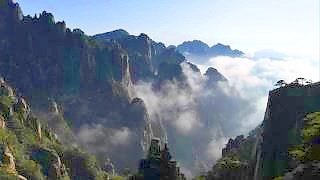 TongZiao Village, YongZhou, HuNan
TongZiao Village, YongZhou, HuNan
With Walk East ...
[640],shadow=true,start=,stop=
Phoenix ancient town, night walk ...
HuNan map

Related Videos
Featured Videos

|
With ErMi ChuiYan ...
|

|
Awesome feel-good dance video ...
Locations: The Great Wall, the Summer Palace, the "Bird's Nest" Beijing National Stadium, QianHai - HouHai, the Temple of Heaven, ZhongShan Park and The Place mall.
Music:the fantastic Pink Martini - "Wo Yao Ni De Ai 我要你的爱" (I Want You, To Be My Baby)
http://swingbeijing.com/
|

|
With BRIX Sweden and Stephen Brawer ...
|

|
Keep warm; share the love !
Featuring guests from Korea, the US and the UK.
Traditional Chinese music flash mob; BeiJing - China together for the coming New Year - many favorite traditional songs, at the New World Trade Center Mall in Beijing ...
Bonus film - the XiaMen City Singers - Mr Q ...
Bonus film 2 - The Barberettes (from Korea; a la the Ronettes) - Be My Baby ...
Rock guitar goddess – YO YO (PinXi Liu) ...
JoySide with MiuMiu - DongDongDong / Can You Feel My Love ...
Angela Chang - A Diao 阿刁 ...
G.E.M. ...
DaiingTana and HAYA Band ...
A little but awesome busking from Taiwan island ...
'Big Fish' 大鱼, from the awesome film 'Big Fish and Begonia' ...
|

|
Extraordinary peaks tower above rolling clouds ...
AnHui province.
|

|
Zhu Ni ShengRi KuaiLe (Happy Birthday to You) 祝你生日快乐 🎂 ! You rock 🎵
MiuMiu GuitarGirl's eighth birthday song.
"I didn't expect that !"
Thank you for the music :)
🎸 Awesome shredding - don't miss it ...
Bonus film - SunnyDay (cover, Jay Chou) 周杰伦 晴天 翻唱 ...
Plus - L'Internationale 国际歌 ...
'And this is my flamenco guitar masterclass' ...
Guitar factory visit (fascinating) ...
A Soft Heart | MiuMiu's MV 心太软 华语经典 ...
Receiving a YouTube silver plaque ...
|

|
With Wei's Travel ...
Bonus films - with FunFancie ...
|

|
A trip to the wild Great Wall ...
Love the ones you're with. Your partner, family, neighbours, the people you pass on the street. As this blue and green planet whizzes through space, we can all share the love with those around us.
The goal of all sane people is to create a better world for our children ...
|

|
HuangShan lies in AnHui province, east China, to the west of HangZhou.
|
Tag search ?

 TongZiao Village, YongZhou, HuNan
TongZiao Village, YongZhou, HuNan




